If you spend a lot of time in a boat you can’t help but notice how fascinating water can be whether it is in constant motion or utterly still and all but invisible. There are some things that water can do that you don’t often see. I recently came across a YouTube video about an unusual phenomenon: a spike wave. The description with the video notes: “Gav and Dan go to an ocean simulator to film a wave that does not occur anywhere in nature….” That may be true of the perfectly formed three-story-tall spike wave created by a sophisticated test tank at the FlowWave Ocean Energy Research Facility at the University of Edinburgh in Scotland, but spike waves do exist. I’ve kayaked with them shooting up all around me.
There is a smaller version of the spike wave that you’ll see every time it rains. A raindrop falling into a puddle will punch a depression into the surface of the puddle, and when the water rushes back to fill the void, a spout of water will rise briefly from the center. That little geyser is called a Worthington jet. It often happens so quickly that you don’t get a good look at it, but on occasion the size and speed of the raindrop will create a larger, more persistent jet.
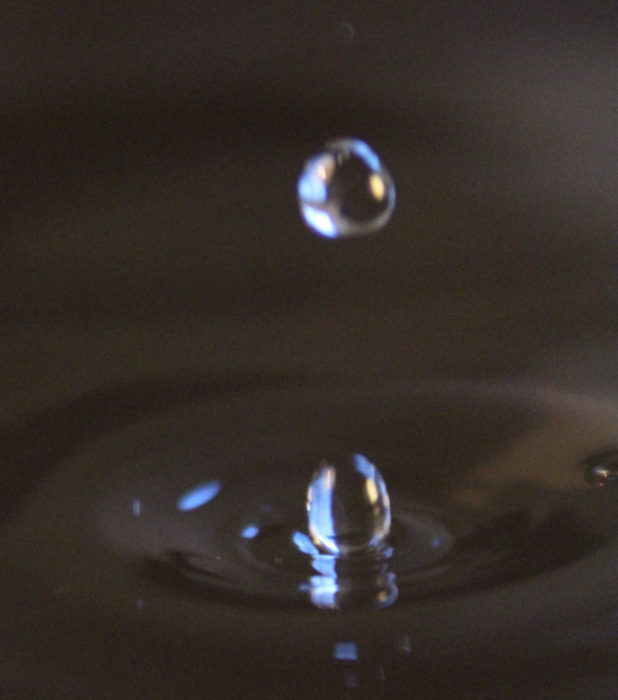
I made a pinhole in a paper cup and let drops fall into a soup bowl full of water.

The impact of the drop creates a depression rimmed with a crown of smaller droplets. This is the beginning of the splash.

The rebound of the depression caused by the falling drop creates a miniature spike wave called a Worthington jet.
I had spent a rainy night on Wheeling Island, just across the Ohio River’s main channel from Wheeling, West Virginia. When I got underway the following morning, the air was still and the river was flat and disturbed only by fat, heavy raindrops. The brown river water was tattooed with expanding concentric rings of tiny ripples and where each drop fell a crystalline column of water nearly 2″ tall and almost 1/4″ in diameter. Covered with them, the river was a tidy, shimmering, lawn of glass.
While a Worthington jet relies on a falling droplet to form a circular rebounding wave, the enormous spike wave at the FloWave test tank was produced by 168 wave-generating paddles around the tank’s circumference all pulsing simultaneously. That’s not something that has an equivalent in nature, but if enough waves come from several different directions to meet at a single point, there can be a spike wave.
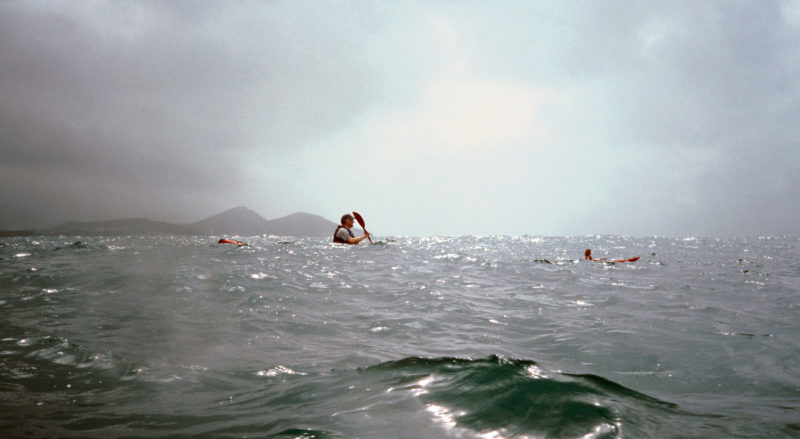
On the crossing to Koločep, Zeljko (center), Radovan (right), and I had only a swell from the southeast to contend with.
In 2005, Zeljko Kelemen had invited me to do some sea kayaking among the Elafiti Islands on Croatia’s Adriatic coast. Zeljko and I set out with Radovan, my guide and translator, from Zaton, a village 3 miles north of Dubrovnik, and made the 1-1/2-mile crossing to the island of Koločep in a 10′ swell from the southeast and 20 knots of wind. Zelkjko landed on the island, and Radovan and I continued toward Bezdanj Point, the island’s blunt and rocky southern extremity.
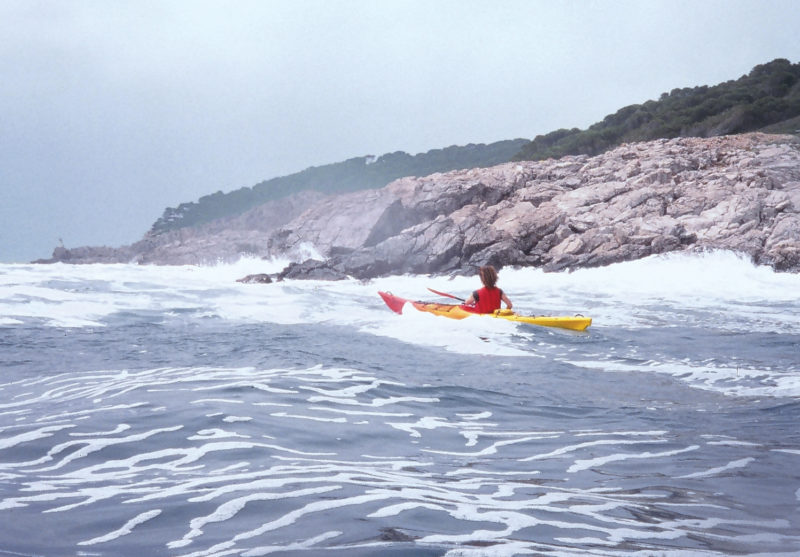
As we approached Bezdanj Point (far left), Radovan and I began to feel the effects of a second set of waves coming from the southwest.
Beyond the point we paddled into a southwest swell that we had been shielded from on the other side of the island. The swells slapped into the 100′-high dun-colored cliffs on Koločep’s west coast, climbed up their sheer faces, and slipped back into a mile-wide open bay like water sloshing in a bathtub. Reflected waves came at us from all angles, and my kayak was swinging like a marble rolled in a mixing bowl. When I was in the troughs, surrounded by curved walls of water on all sides, even the cliffs, just 100 yards to starboard, vanished behind wave after wave. From the crests, I saw a throbbing sawtooth sea tearing at the horizon.
The shapes moving across the surface could hardly be called waves. There were no discernible patterns, only random mounds and hollows that changed so quickly that the water couldn’t keep pace. Waves heaved upward in tall steep-sided pyramids that turned into ropey fathom-tall columns of silvery water suspended for a moment in midair. Spike waves. When they fell, they slipped downward, intact for a moment, and then disintegrated into white froth.
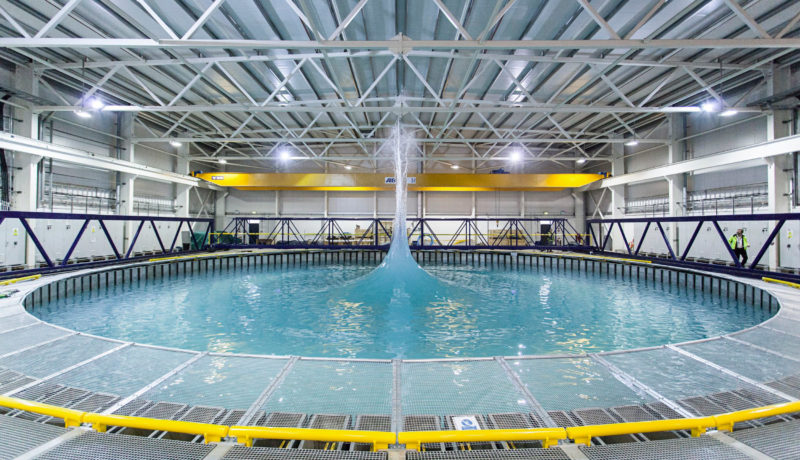 FloWave Ocean Energy Facility, The University of Edinburgh
FloWave Ocean Energy Facility, The University of EdinburghWhen all of the wave-generating paddles on the circumference of the tank act in unison, the tank can create a spike wave that will shoot up to the ceiling.
The quad-spike wave (1 minute, 20 seconds into the video) generated at FloWave was very much like what I paddled through. I asked the senior experimental operator at FloWave about those spike waves occurring in nature. He replied: “I’m afraid I don’t know much about where spike waves occur in nature. However, if you have waves from different directions combining (perhaps due to reflected waves), I could see it being feasible that this would produce spike-like waves due to localized areas of very steep waves, especially in choppy conditions.”
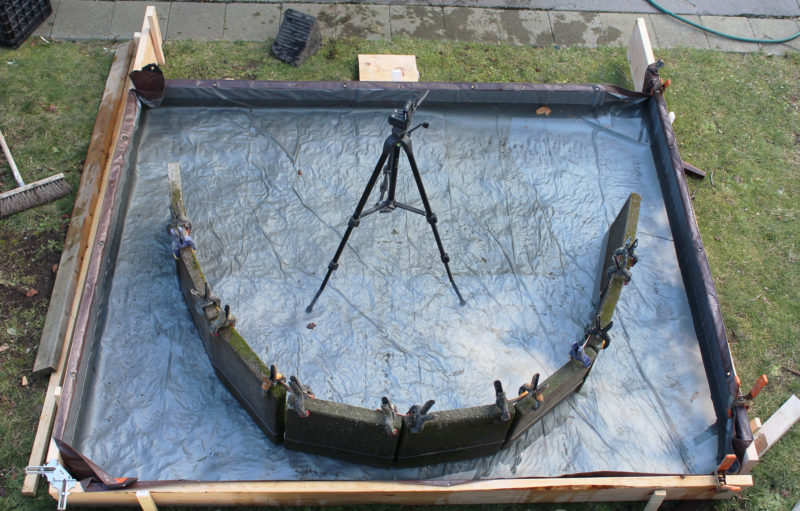
My backyard wave tank
I made a quick-and-dirty wave tank to see if I could generate spike waves. For one series of trials I made a wall of concrete pavers in an eyeballed parabola. For other trials I removed the concrete and pivoted the walls to the top and right to make waves. With waves coming in two directions and rebounding in the two opposing directions, I was able to create lots imperfect spike waves and one perfect spike wave. It rose up straight and symmetrical about 15″. It caught me by surprise and I didn’t have the camera recording at the time. Below are some of the waves I did capture on video.
I wish I had taken photos of the spike waves I paddled among in Croatia, but it was all I could do to keep my kayak right-side up and my breakfast down. I’d like to see those waves again, but I hope not to be in a boat when I do. I’d rather row through a flat plain of Worthington jets.![]()





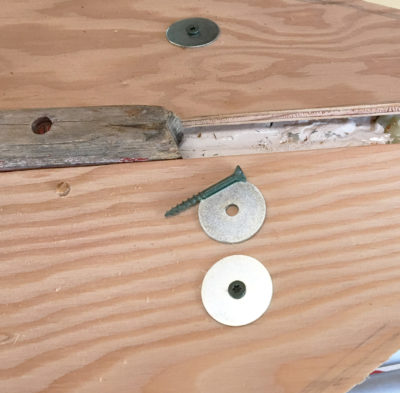
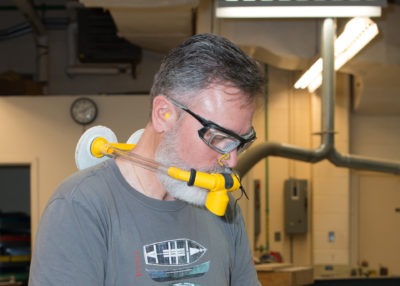
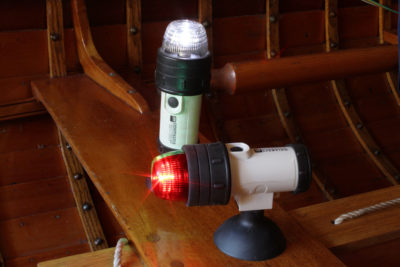
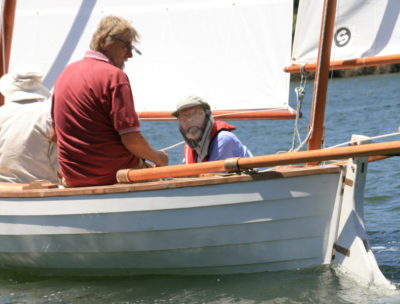
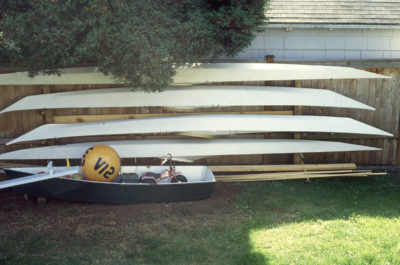
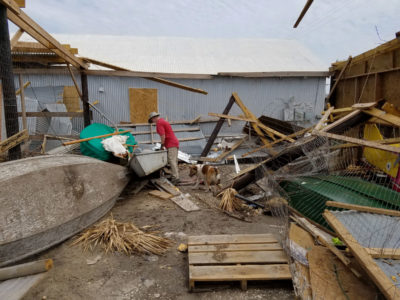
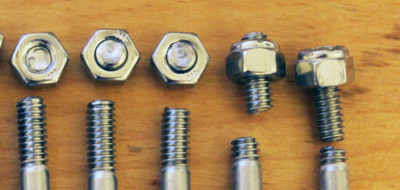
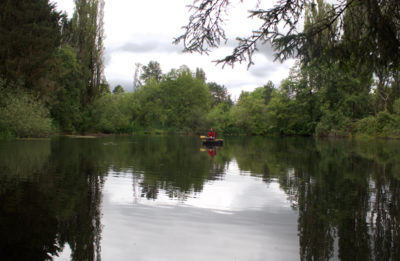
Fun! You have to be the coolest kid on the block. We see some interesting fetch on a local causeway, need to take a closer look.
There’s a pretty good one at 1:19.
The backyard movie quickly brought me back to a Barkley Sound trip in the 80’s…when a group of kayakers could camp in the Broken Group and not see other kayakers for days. One morning I had edged out to the outside of Wower Island alone and encountered some sort of confluence of tide, waves, fetch and wind which produced a situation that reminded me of a larger version of what suncup snow looks like. Was glad to get out of there.
https://www.neilhopkins.us/mountaineering-guide-2/images/981_476_527-glacial-suncups.jpg
This illustration also shows a kind of dense frozen version of spike waves called penitents.